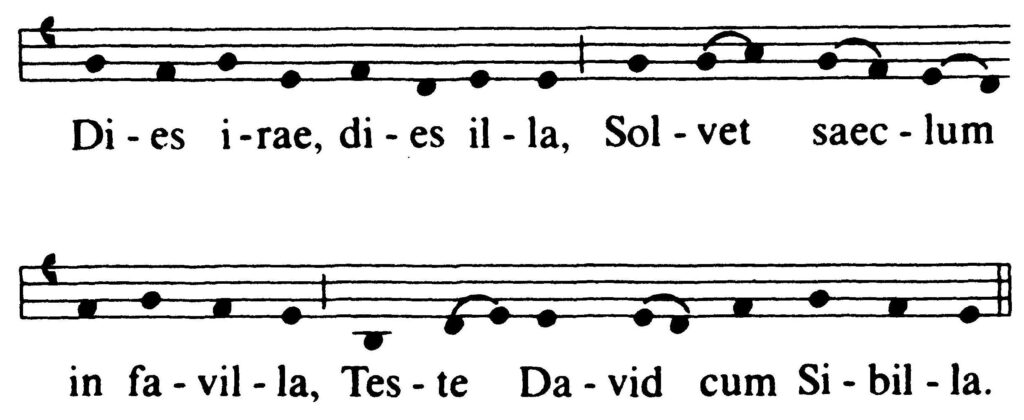Born in Poland, Frédéric François (Fryderyk Franciszek) Chopin is perhaps one of the most influential and important figures of Western Classical Music. A prodigy, Chopin has maintained worldwide renown as a leading musician of his era, one whose poetic genius was based on a professional technique that was without equal in his generation.
All of Chopin’s composition features the piano. In fact, ‘Introduction and Polonaise brillante’1 which Chopin dedicated to the Austrian cellist Joseph Merk2, would perhaps be one of the few pieces the composer ever wrote for an instrument other than a piano3. Chopin’s style, however, would be something unique to himself. Despite being fascinated by the ‘Old Masters’ especially Bach4, his individuality grew when he trained under the Polish composer Joseph Elsner at the Warsaw Conservatory of the Music. Although Chopin’s study was more traditional, Elsner was a romantically inclined composer, who allowed Chopin’s individual imagination to flourish and not be checked by academic demands5. “At the Warsaw Conservatory, he was put through a solid course of instruction in harmony and composition, while in piano playing he was allowed to develop a high degree of individuality”6
Chopin’s love life was often complicated. After several mishaps of relationships, Chopin was finally able to fall in love with Aurore Dudevant, better known as George Sand, a free-living novelist. In the autumn of 1838, he set off with Sand and her children, Maurice and Solange, to the island of Majorca. They rented a villa and were happy until the sunny weather ran its course and Chopin became ill. When rumours of tuberculosis reached the villa owner, they were ordered out and could find accommodation only in a monastery in the remote village of Valldemosa. The damp environment and the local’s suspicion worsened the situation, and the lack of a suitable piano hindered Chopin’s artistic expression as he grew physically weaker. This was the start of what would lead to his death from tuberculosis ten years later. During this period, Sand realised that the only way to save Chopin would be to take him as soon as possible to a skilled physician. After three months, Chopin had sufficiently recovered and they began to make their plans to return to Paris. During his stay at Majorca, Chopin finished work on 24 Preludes, Op. 28 — a set of short pieces for the piano, one in each of the twenty-four keys. Aided by a copy of Bach’s ‘The Well-Tempered Clavier’, he produced a series of pieces similar to Bach’s two sets of preludes and fugues, comprising a complete cycle of the major and minor keys, though with a different ordering.
Chopin carefully prepared the manuscript for publication, which was dedicated to the German pianist and composer Joseph Christoph Kessler.
Although the term “prelude” had been previously used to describe an introductory piece of music, Chopin’s preludes are structured and designed as self-contained units, each conveying a specific idea or emotion in a very short duration. By grouping 24 Preludes, Op. 28 together as a single work comprising miniatures that could either be used to introduce other music or be perceived as self-standing compositions, Chopin challenged contemporary attitudes that undermined the value of miniature musical forms. The prelude in A-minor is one of them.
Of all of Chopin’s works, no piece has ever been so objectionable to listeners and at the same time so fascinating to critics. Earlier criticisms subjected towards this piece have often been more than unsavoury as Andre Gide declared it to be ‘not a concert piece’ and that he could not imagine ‘any audience liking it’7. To begin with, the melody is hardly “Chopinesque”; rigid and monotonous rather than flexible and expressive. The underlying harmony is radically avant-garde even by Romantic standards, with ambiguities and complexities at its core.
The pessimism in the ‘A-minor’ Prelude has often been verbalised by various critics in the past such as Hunker, who said that in the prelude ‘there is an aversion to life'8. Another description from the 19th century attributed to Hans von Bulow titled ‘Presentiment to Death’ describes it as a funeral knell of sort and ‘the inexorable voice of death'9. Heinz Roemheld, the composer, imagined it as the interior of a house filled with an ‘atmosphere of death’10in the motion picture ‘The Black Cat’ (1934).
Music from the Romantic era chose to deliver its messages through attached programs and veiled references to other notable compositions. Chopin often expressed his disdain for attached programs, so much so that he never wrote a programmed piece, being averse to the idea of attaching them to instrumental composition, especially his own.11

However, as it turns out, Chopin was not immune to quotations. The critic Anatole Leikin, in his article, ‘Chopin’s A- Minor Prelude and Its Symbolic Language’12 points out that the plainsong13 Dies Irae14reverberates throughout the piece. Robin Gregory and Malcolm Boyd both list several examples of secular use of the piece (Dies Irae) throughout the 19th and 20th centuries.15
An outline of the chant’s beginning can be heard in the ‘A minor’ Prelude initially in the left hand, which plays a variant of the first four notes of the Dies Irae. At first glance, neither of the two accompanying voices contain a coherent melody. Upon further study, however, it becomes obvious that the upper note of every odd interval and the lower note of every even interval form the melodic line B-A#-B-G

The Dies Irae ‘act’ is repeated at different pitch levels between bars 15 and 23 in the ‘A Minor’ Prelude. The austere melody of the right hand too, traces its origin to this medieval chant, as the first two phrases follow a step-wise descent much like the original chant (the Dies Irae).
In the left-hand introduction, Chopin moved the lower note of the descending third (irae) a semitone down. The prelude’s treble then enters with a continuation of the chant (dies illa), in which the lower note of the second third is also dropped a semitone. Both these conversions are done for a harmonic reason – to conform to the E-minor triad – and employ a familiar technique of tonal-answer writing, in which certain notes in the imitating voice are moved a degree down.16

The conclusion of the Prelude has the same ending as the second and third phrases of Dies Irae.

From a romantic point of view, the unresolvable clash between the melody and harmony represent Chopin’s way of staging a larger, macrocosmic conflict of opinions between Classical authority and Romantic revolution, with the discussion in favour of Romanticism. The melodic design of the Prelude pays homage to the Classical demands. The second melodic statement can be perceived as a sort of resolution between the first two levels of structure. Ignoring a grace note in m.10, the first statement uses only a single pitch F#, discordant from the initial tonic, A minor. The F# becomes increasingly prominent, and the statement closes with four repetitions of it after descending a fourth from A to E. With the beginning of the second statement, it repeats the A-E descent and proceeds to F natural.
As the critic Michael Rogers points out, the first melodic statement articulates the descent of a minor seventh (E to F#), and the second statement mirrors the descent (A to B) through m. 21.17 In the little block-chord coda to the piece, the second statement is decidedly extended to descent through the tonic octave, A-A. Given the tacked-on nature of this close, it is important to note that the octave resolution has already occurred almost imperceptibly, at mm. 20-21, where an upbeat A is tied under the melodic goal, B. The force of this resolution is enhanced by the fact that the first descent of a seventh is structural rather than audible- the first melodic statement transposes its second strain from b to b 1 so that the structural event is composed of the sequences e 1 -b,b 1 -f# 1 – while the second descent is both audible and structural once, an actual registral movement a 1 to a.18
As opposed to this melodic balancing act, the harmony of this piece is completely unclassical – almost anticlassical. The harmonically uncertain passage at mm. 11-14 represents the grating non-harmonic dissonance of the accompaniment. The normal relation between the melody and harmony is reversed. The dissonance can no longer be said to be coherent through subordination to the underlying harmony, while the harmony, in Classical terms, has been rendered incoherent by subordination to the dissonance. It can be concluded that it is the melodic design alone that links the piece to the Classical style.
Returning to the musical quotations, the images of death and disintegration are contained in the text of Dies Irae (“the world shall dissolve in ashes”). Something similar to that was used by Chopin’s favourite poet, Adam Mickiewicz – “Death has cracked the house of clay”19
References to funeral marches were nothing strange in Chopin’s music. Even though, he wrote only one funeral march during his lifetime – ‘Marche funebre’ (1826), Chopin did not hold back from referencing them in his works. In case of the Prelude in discussion, each of its first three melodic phrases ends on a dotted – rhythm repetition of the same pitch. This particular act is identical, rhythmically and melodically, to his own , ‘Marche funebre’ (1826).20
Chopin’s ‘Prelude in A minor’ is a strange and unique piece that poses more questions to the listener than any of his other works. Despite the tones of dissonance and disharmony in the piece which may result in an initial aversion to it, it makes for an intriguing and interesting listen. It fills the listener with a dread for the one true certainty in life, something Chopin understood all too well. Perhaps, it is just like what Scriabin said after he played his own Prelude, based upon Chopin’s, to his friend Leonid Sabaneev – “This is death…”21
"The views and opinions expressed in this article are those of the author and do not necessarily represent the views of The Renaissance"
.
Polonaise Brilliante, Introduction and Polonaise brillante in C major, Op. 3, is a composition for cello and piano by Frédéric Chopin ↩
Joseph Merk, In 1829, the 19-year-old Frédéric Chopin visited Vienna, and dedicated his Introduction and Polonaise brillante Op. 3, to Joseph Merk. In a letter, Chopin wrote “On Thursday there was a soiree at Fuchs’s when Limmer introduced some of his own compositions for four violoncellos. Merk as usual made them more beautiful than they really were by his playing, which is so full of soul. He is the only violoncellist I really respect”. Chopin was also said to have played with Merk ↩
Chopin, the Masterworks, Delphi Classics, 2018, Pg. 11 ↩
Chopin as a Romantic Composer.https://bit.ly/36UBLN1 ↩
Chopin, the Masterworks, Delphi Classics, 2018, Pg. 11 ↩
Chopin, the Masterworks, Delphi Classics, 2018, Pg. 11 ↩
From Notes on Chopin, trans. Bernard Frechtman, cited in Norton Critical Score: Preludes Op.28, ed. Thomas Higgins(New York W.W Norton,1973 ↩
Chopin, 221 ↩
Rosengard Subotnik, 94-5 ↩
William Rosar, “Music for the Monsters: Universal Pictures” Horror Film Scores of the thirties,” Quarterly Journal of the Library of Congress, 403. ↩
Chopin’s Letters, collected by Henryk Opienski ↩
Chopin’s A-Minor Prelude and its Symbolic Language https://www.jstor.org/stable/24618957 ↩
Plainsong – a type of church music for voices alone, used since the Middle Ages, Oxford Learner’s Dictionaries -Oxford Learner’s Dictionaries | Find definitions, translations, and grammar explanations at Oxford Learner’s Dictionaries ↩
Dies Irae – Dies Irae (“the Day of Wrath”) is a Latin sequence attributed to either Thomas of Celano of the Franciscans (1200–c.1265) or to Latino Malabranca Orsini (d. 1294), lector at the Dominican stadium at Santa Sabina, the forerunner of the Pontifical University of Saint Thomas Aquinas, Angelicum in Rome. The sequence dates from at least the thirteenth century, though it is possible that it is much older, with some sources ascribing its origin to St. Gregory the Great (d. 604), Bernard of Clairvaux (1090–1153), or Bonaventure (1221–1274). -en.wikipedia.org ↩
Robin Gregory, “Dies Irae” Music & Letters, 34(1953); 133-9; Malcolm Boyd, “Dies Irae: Some Recent Manifestations” Music & Letters, 49-1968 ↩
Chopin’s A-Minor Prelude and its symbolic language – https://www.jstor.org/stable/24618957 ↩
Michael Rogers “Chopin, Prelude in A minor” ↩
Lawrence Kramer “Romantic Meaning in Chopin’s Prelude in A minor”https://doi.org/10.2307/746580 ↩
Forefathers, Eve, 149 ↩
Marche funebre ↩
Leonid Sabaneev, Vospominaniya o Scriabine, 270 ↩



